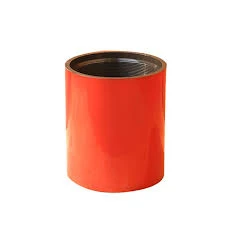- Afrikaans
- Albanian
- Amharic
- Arabic
- Armenian
- Azerbaijani
- Basque
- Belarusian
- Bengali
- Bosnian
- Bulgarian
- Catalan
- Cebuano
- Corsican
- Croatian
- Czech
- Danish
- Dutch
- English
- Esperanto
- Estonian
- Finnish
- French
- Frisian
- Galician
- Georgian
- German
- Greek
- Gujarati
- Haitian Creole
- hausa
- hawaiian
- Hebrew
- Hindi
- Miao
- Hungarian
- Icelandic
- igbo
- Indonesian
- irish
- Italian
- Japanese
- Javanese
- Kannada
- kazakh
- Khmer
- Rwandese
- Korean
- Kurdish
- Kyrgyz
- Lao
- Latin
- Latvian
- Lithuanian
- Luxembourgish
- Macedonian
- Malgashi
- Malay
- Malayalam
- Maltese
- Maori
- Marathi
- Mongolian
- Myanmar
- Nepali
- Norwegian
- Norwegian
- Occitan
- Pashto
- Persian
- Polish
- Portuguese
- Punjabi
- Romanian
- Russian
- Samoan
- Scottish Gaelic
- Serbian
- Sesotho
- Shona
- Sindhi
- Sinhala
- Slovak
- Slovenian
- Somali
- Spanish
- Sundanese
- Swahili
- Swedish
- Tagalog
- Tajik
- Tamil
- Tatar
- Telugu
- Thai
- Turkish
- Turkmen
- Ukrainian
- Urdu
- Uighur
- Uzbek
- Vietnamese
- Welsh
- Bantu
- Yiddish
- Yoruba
- Zulu
Creating Effective Bull Plug Strategies for Enhanced Performance and Productivity in Business
Understanding Bull Plugs An Insight into Their Design and Use
In the world of plumbing and industrial applications, various tools and accessories play a critical role in ensuring efficiency and effectiveness in fluid management. One such accessory is the bull plug. Though it might seem like a simple device, the bull plug has specific functions and characteristics that make it essential for various applications. This article delves into what a bull plug is, its design, uses, and key considerations when selecting one.
What is a Bull Plug?
A bull plug, often referred to as a pipe plug or a bull-headed plug, is a type of fitting used to seal the end of a pipe. The primary purpose of a bull plug is to prevent the flow of fluid through pipes or to provide a means of isolating a section of piping for maintenance or inspection. Bull plugs are commonly used in both residential plumbing systems and larger industrial settings where precise control over fluid flow is necessary.
Design Features
The design of a bull plug is specific to its function. It typically consists of a cylindrical body made from materials such as PVC, steel, or brass, depending on the intended application. The external surface usually features threaded or smooth finishes to ensure a tight fit within the pipe.
A bull plug often has a larger diameter compared to traditional plugs, hence the name bull. This larger size allows for easier handling and installation, especially in larger piping systems. Additionally, some bull plugs are equipped with a chamfered edge, which facilitates easier insertion into the pipe.
Types of Bull Plugs
1. Threaded Bull Plugs These plugs feature external threads that allow them to screw into the corresponding internal threads of a pipe end. They provide a secure seal and are suitable for high-pressure applications.
2. Non-Threaded Bull Plugs These plugs fit snugly into the pipe without the need for threads. They are often used in applications where frequent removal is not necessary.
3. Blind Bull Plugs These serve as caps to completely seal off the pipe end. They are often used in temporary applications where flow needs to be stopped, but access might be required later.
4. Specialty Bull Plugs Some bull plugs come with additional features such as pressure relief valves, which help to manage pressure within the system and prevent potential damage.
2 bull plug

Applications of Bull Plugs
Bull plugs have a wide range of applications in various fields such as
- Plumbing In residential plumbing, bull plugs are used to cap off pipes when modifications are being made to the plumbing system or during repairs. - Oil and Gas In the oil and gas industry, bull plugs are installed on pipelines to ensure safety and to facilitate maintenance operations without disrupting the overall system. - Manufacturing In manufacturing facilities, bull plugs are utilized in hydraulic systems to prevent fluid escape when systems are being serviced.
- Construction During construction projects, bull plugs help in maintaining pressure in temporary piping systems until final connections are made.
Considerations When Selecting Bull Plugs
When choosing a bull plug for your application, there are several factors to consider
- Material The material of the bull plug must be compatible with the fluids it will be in contact with. For instance, PVC is commonly used for water applications, while metal plugs might be necessary for oil or gas services.
- Size Always ensure that the bull plug matches the diameter of the pipe to ensure a proper fit and seal.
- Pressure Ratings Different applications have varying pressure requirements. It is crucial to select a bull plug that can withstand the pressure levels of the system.
- Ease of Installation Consider whether you need a threaded or non-threaded bull plug based on how often you will need to remove or adjust it.
Conclusion
The bull plug, though simple in design, plays a vital role in fluid management across various industries. With a clear understanding of its function, types, applications, and the critical factors in choosing the right plug, users can ensure that their piping systems remain efficient and effective. Whether you are engaged in plumbing, manufacturing, or oil and gas, recognizing the importance of bull plugs can streamline operations and enhance safety protocols.
-
Tubing Pup Joints: Essential Components for Oil and Gas OperationsNewsJul.10,2025
-
Pup Joints: Essential Components for Reliable Drilling OperationsNewsJul.10,2025
-
Pipe Couplings: Connecting Your World EfficientlyNewsJul.10,2025
-
Mastering Oilfield Operations with Quality Tubing and CasingNewsJul.10,2025
-
High-Quality Casing Couplings for Every NeedNewsJul.10,2025
-
Boost Your Drilling Efficiency with Premium Crossover Tools & Seating NipplesNewsJul.10,2025







